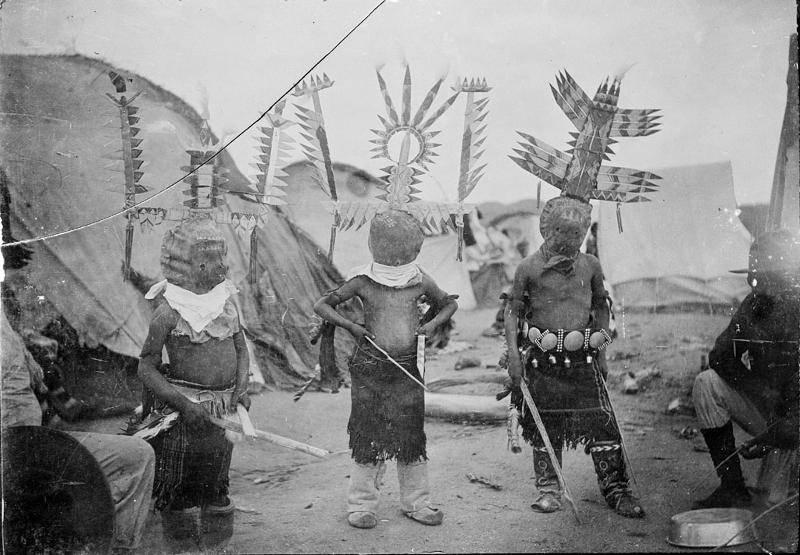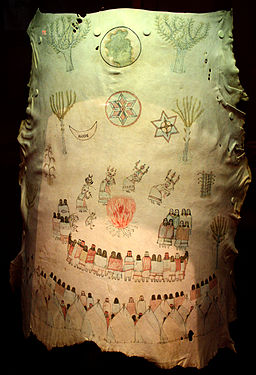Ceremonies
|
Apache rituals combine priestcraft (in which power derives from the practice of learned, communal ceremonies) with shamanism (in which power derives from solitary visions and activities). The Apache believe that the supernatural power that pervades the universe can be acquired through dreams or supernatural means, but that the rites that are bestowed from this power can be taught to others. Ceremonies are conducted for a variety of purposes, including to protect against illness, to improve luck in hunting, or to assure a prosperous life. Rituals are based on the concept of reciprocity, in which it is believed that specific songs, prayers and offerings can be used to attract the gaan (or gaa'he, as they are referred to among some Apache groups), the supernatural beings that live in mountains and caves.
These mountain spirits will then be obligated to reciprocate by bestowing their power to the shaman or patient. Like the Navajo, the Apache make use of singers and sandpaintings to invoke supernatural blessings. Some ceremonies involve the participation of Crown Dancers (also known as gaan dancers) who wear masks and large headdresses during dances that can last through the night. Like the sandpaintings and songs, these dances are believed to entice the gaan spirits to come. During the dances the Crown Dancers are believed to "become" the mountain spirits in much the same way that the Hopi kachina dancers "become" the kachina while they are dancing.
Apache Crown Dancers, 1889 Source - http://sirismm.si.edu/naa/baegn/gn_02563b.jpg
|
The most important of the Apache rituals is the girls puberty ritual known as the Sunrise Ceremony. This ceremony lasts four days, during which time the girl is infused with White Painted Woman's powers of renewal and rebirth. As in the Navajo kinaalda ceremony, during the Sunrise Ceremony the girl is expected to be molded by an older woman into a woman that possesses the admirable traits of White Painted Woman. Because these ceremonies involve the hosting of large numbers of people and the serving of feasts, they were (and still are) expensive to host. In early historic times, raiding provided a man with the resources needed to host his daughter's Sunrise Ceremony. Today, not every Apache girl has this ceremony, both because not everyone can afford it and because not everyone wishes to do so. To offset the costs associated with the ceremony, it is common today for a community to host one large Sunrise Ceremony per year for all girls that have come of age that year.
Hide painting made by Cochise's son Naiche, ca. 1900, depicting an Apache girl's puberty ceremony Source - By Uyvsdi (Own work) [Public domain or Public domain], via Wikimedia Commons |
Click on next page to continue.


